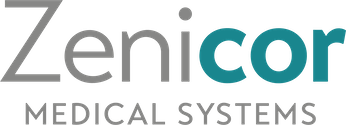Kosten-Effektivität
Screening in der Primärprävention
Cost-effectiveness of population screening for atrial fibrillation: the STROKESTOP study
Lyth, J., Svennberg, E., Bernfort, L., Aronsson, M., Frykman, V., Al-Khalili, F., Friberg, L., Rosenqvist, M., Engdahl, J., & Levin, L. Å. (2023). European heart journal, 44(3), 196–204. https://doi.org/10.1093/eurheartj/ehac547
Abstract
Aims: Previous studies on the cost-effectiveness of screening for atrial fibrillation (AF) are based on assumptions of long-term clinical effects. The STROKESTOP study, which randomised 27 975 persons aged 75/76 years into a screening invitation group and a control group, has a median follow-up time of 6.9 years. The aim of this study was to estimate the cost-effectiveness of population-based screening for AF using clinical outcomes.
Methods and results: The analysis is based on a Markov cohort model. The prevalence of AF, the use of oral anticoagulation, clinical event data, and all-cause mortality were taken from the STROKESTOP study. The cost for clinical events, age-specific utilities, utility decrement due to stroke, and stroke death was taken from the literature. Uncertainty in the model was considered in a probabilistic sensitivity analysis. Per 1000 individuals invited to the screening, there were 77 gained life years and 65 gained quality-adjusted life years. The incremental cost was €1.77 million lower in the screening invitation group. Gained quality-adjusted life years to a lower cost means that the screening strategy was dominant. The result from 10 000 Monte Carlo simulations showed that the AF screening strategy was cost-effective in 99.2% and cost-saving in 92.7% of the simulations. In the base-case scenario, screening of 1000 individuals resulted in 10.6 [95% confidence interval (CI): -22.5 to 1.4] fewer strokes (8.4 ischaemic and 2.2 haemorrhagic strokes), 1.0 (95% CI: -1.9 to 4.1) more cases of systemic embolism, and 2.9 (95% CI: -18.2 to 13.1) fewer bleedings associated with hospitalization.
Conclusion: Based on the STROKESTOP study, this analysis shows that a broad AF screening strategy in an elderly population is cost-effective. Efforts should be made to increase screening participation.
Tandvårds- och läkemedelsförmånsverket, The Dental and Pharmaceutical Benefits Agency, TLV. Health economic evaluation of Zenicor-EKG in atrial fibrillation, Feb 7th 2022
Tandvårds- och läkemedelsförmånsverket (2022)
The Swedish Dental and Pharmaceutical Benefits Agency, TLV, has made a health economic assessment of different methods for diagnosing atrial fibrillation in primary care. The results show that the care pathway with Zenicor-ECG is more efficient for healthcare.
Cost-effectiveness of screening for atrial fibrillation in a single primary care center at a 3-year follow-up
Ghazal F., Aronsson M., Al-Khalili F., Rosenqvist M & Levin L-Å
Scandinavian Cardiovascular Journal (2022)
A post hoc analysis based on a cross-sectional screening study for AF among 70–74-year old patients, who were registered at a single primary care center, was followed for three years for mortality. Screening for AF among 70–74-year olds in primary care using intermittent ECG appears to be cost-effective at 3-year follow-up with high anticoagulants adherence and no increased mortality.
Gesundheitsökonomische Auswertung des primärpräventiven Screenings auf Vorhofflimmern mittels Daumen-EKG
Tandvårds- och läkemedelsförmånsverket (The Dental and Pharmaceutical Benefits Agency) (2014) (2016)
Link zur Studie (nur auf Schwedisch)
Im Rahmen eines Regierungsauftrages zur Auswertung von Medizintechnik hat das TLV auf der Grundlage von Daten der Stroke-Stop-Studie das primärpräventive Screening auf Vorhofflimmern gesundheitsökonomisch ausgewertet. Der Bericht ergibt, dass das primärpräventive Screening auf Vorhofflimmern mit dem Daumen-EKG kosteneffektiv ist.
Cost-effectiveness of mass screening for untreated atrial fibrillation using intermittent ECG recording
Aronsson, M., Svennberg, E., Rosenqvist, M., Endahl, J., Al-Khalili, F., Friberg, L., Frykman-Kull, V. & Levin, L-Å.
Europace. 2015. Apr 13. 1023-1029
In einer weltweit einzigartigen Studie am Karolinska-Institut wurden 13.000 Personen zu einem Screening auf Vorhofflimmern mit dem Zenicor-EKG eingeladen. Unter den Teilnehmern sind 5 % neue Patienten zur Behandlung mit schlaganfallvorbeugenden Gerinnungshemmern diagnostiziert worden. Diese gesundheitsökonomische Berechnung basiert auf dem Ergebnis der STROKESTOP Studie. Diese Studie bewertet ein systematisches umfassendes Früherkennungsprogramm auf Vorhofflimmern mittels Zenicor-EKG als kosteneffizient.
Screening in der Sekundärprävention
A cost-effectiveness analysis of screening for silent atrial fibrillation after ischaemic stroke
Levin L., Husberg M., Doliwa Sobocinski P., Frykman Kull V., Friberg L., Rosenqvist M. & Davidson T.
Europace (2014 Oct 27), Online
In Linköping haben Forscher auf der Grundlage der Daten aus der Studie Propp-Stopp feststellen können, dass das Screening 75-jähriger Schlaganfallpatienten auf stilles Vorhofflimmern sehr kosteneffektiv ist. Nach 7 Jahren ist gar eine Einsparung von Pflegekosten festzustellen. Für das Zenicor-EKG haben die Studien im Vergleich zum Langzeit-EKG sowohl eine höhere Empfindlichkeit als auch niedrigere Kosten ergeben.

